Not all sacrifice branches need to be big. Small sacrifice branches are a good way to thicken the trunk and close wounds on trees even when most of the branch work is complete. Here’s an example.
Shohin black pine – 7″ (16″ with sacrifice branch)
The tree above is fifteen years old from seed. I’d like for the upper section of the trunk to thicken so I let a branch grow freely for the past two years while decandling the other branches on the tree.
The lower part of the trunk
The slender section of the trunk
I plan to remove the sacrifice branch next year. This will give it time to thicken the upper section of the trunk, help close a large wound on the back of the tree, and give the branches that will form the future apex more time to develop before I make the cut.
Large wound on the back of the tree
Options for the future apex
Here’s another example. The tree is the same age but I started decandling later to give the trunk more time to thicken.
Japanese black pine – 22″
Like the previous tree, this tree makes a big jump in taper from the lower part of the trunk to the upper section. Because I like trees with more gradual transitions of taper, I’m using the sacrifice to thicken the upper part of the trunk.
The slender, upper section of the trunk
I plan to leave the current sacrifice branch in place for one year, at which point I’ll likely transition to a new apex and let a new sacrifice branch run for a few years. In the meantime, I’ll continue to work on the branches by decandling.
Location of the next large cut
Potential future apex
The large wound on the back of this tree has almost closed, so the primary benefit of the sacrifice branch will be to thicken the top section of the trunk.
Callus forming over a large wound
Neither tree needs large sacrifice branches at this point so I expect the wounds they leave behind when they are removed will close in two to three years.
Subscribe to Bonsai Tonight
New Posts Delivered Every Tuesday and Friday

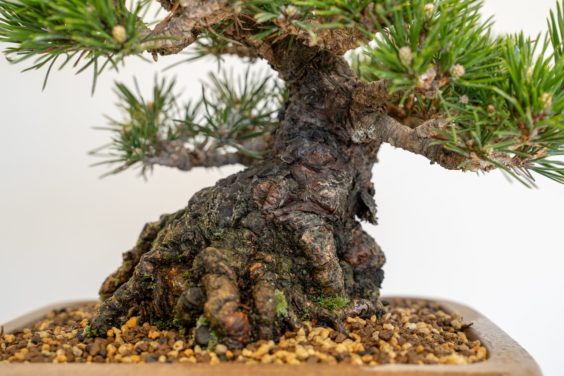
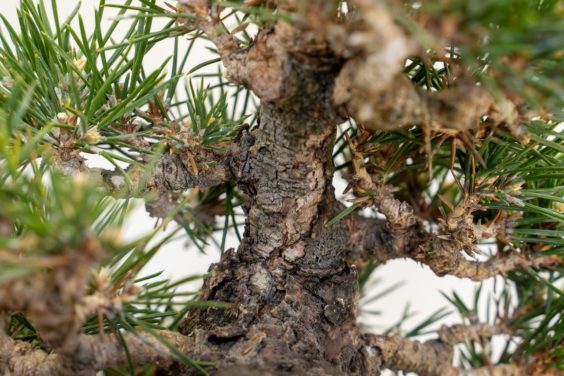
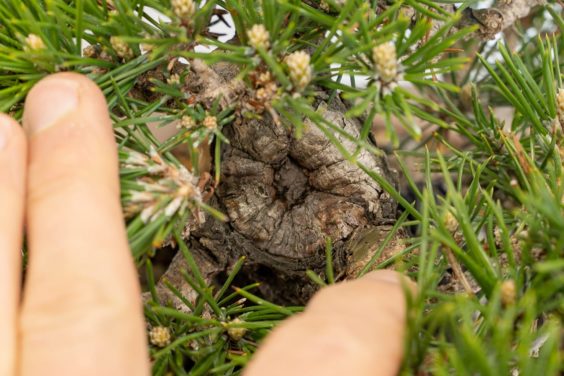
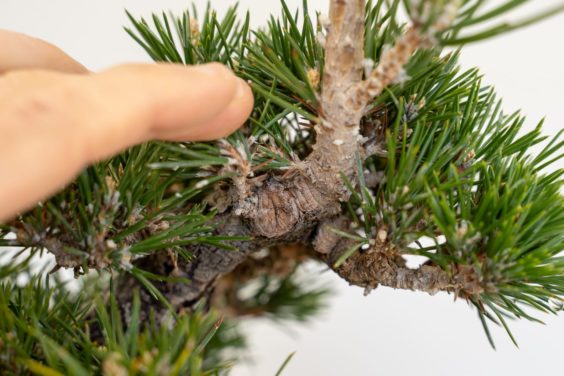
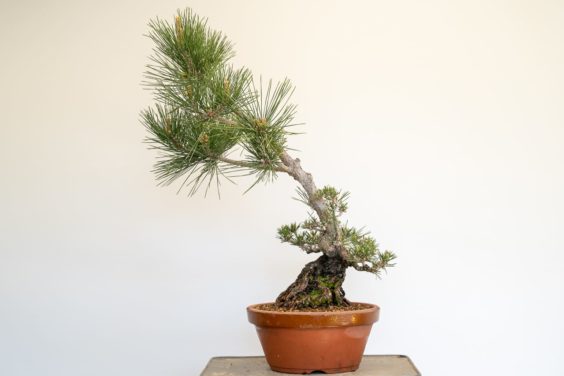
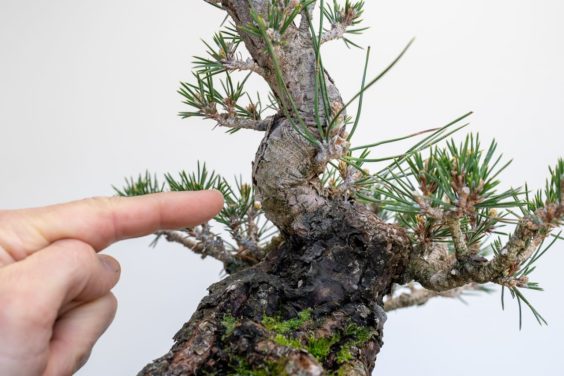
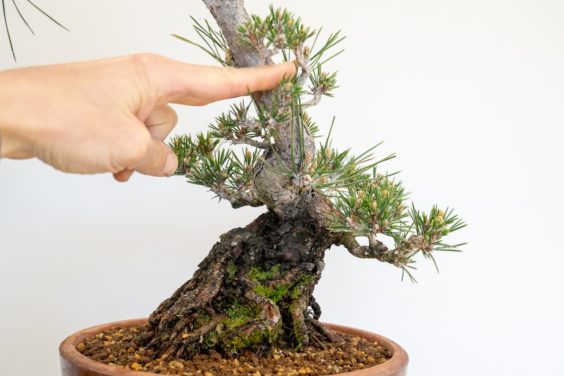
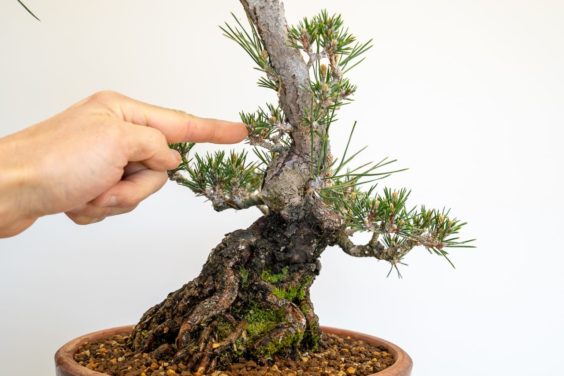
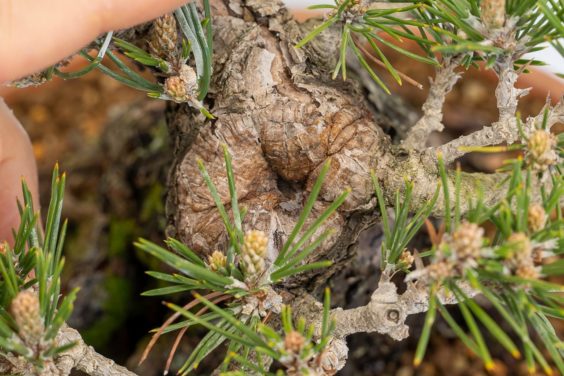
Darlene Hutt says
As always…very informative! Thanks
Jonas Dupuich says
Thanks Darlene!
Alessandro says
Ciao Jonas!
Those pines are impressive in “only” 15 years! Which technique do you have used? Maybe colander?
Thank you for sharing your experiences!
Alessandro
Jonas Dupuich says
Yes, the first tree grew in a colander until two years ago, and the second went into a clay pot this year. Thanks Alessandro!
Christopher St-Laurent Pedneault says
So informative, as always! Thanks! If this were a Japanese white pine, since we’re not decandling secondary branches, would you let the secondary branches grow the entire season, then cutback or would you rather pinch them in the spring?
Jonas Dupuich says
Good question Christopher – I’d likely let a similar white pine grow all season and then cut back in fall. I’d consider pinching vigorous shoots, if any, on the lower part of the tree in spring.
Ray says
Nice work Jonas, always look forward to the info
Jonas Dupuich says
Thanks, Ray!
Sam H. says
Wish I would have found this blog years ago. Very informative and I suspect I would have better looking trees now.
Jonas Dupuich says
Thanks, Sam – I appreciate it!